Canadian Animation: The Struggles of Earning Recognition from its Audience
During the 1950’s with the popular usage television spreading throughout Canada, the need for original Canadian programming was demanded. Preserving the Canadian cultural identity within the country, while also producing original content to compete against competitors from the United States. Making Canadian television programs in multiple genres was eminent for the Canadian audience; however, the goal is not so easily reached. Despite the effort paying off as Canadian entertainment was becoming recognized within Canada, its recognition and significance is not so easily noticed in other countries. And no other medium has a harder time being recognized than Canada’s own animation production. Canadian animation dates back to 1939 with the founding of the National Film Board of Canada, where the animation department thrived to stand out from American animators for artistic and cultural purposes. For years Canadian animation in the television industry was in a constant struggle, it was not until the 1970’s that Canadian animation started to make a name for itself in television history with the help of Nelvana studios.
Nelvana – Canada’s Leading Animation Company
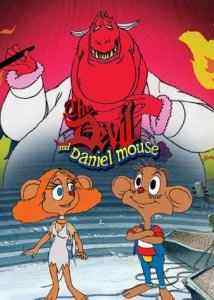
Founded in 1971, Nelvana paved the way for Canadian animators with the success of its variant animated specials such as The Devil and Daniel Mouse (1978). Though due to the troubled production and box office bomb of their first animated film, Rock and Rule (1983), Nelvana switched to television shows, making long-lasting successes like Inspector Gadget (1983-1986) that worked its way into American networks and became popular there too. With the downside being that while successful, the shows do not give to the Canadian identification of their country of origin. Thankfully, inspired by Nelvana’s success, the defunct Atkinson-Film Arts produced in the 1980s an animated series that was not only popular, but was a major contributor to the Canadian identity in animation, The Raccoons. (1985-1992)
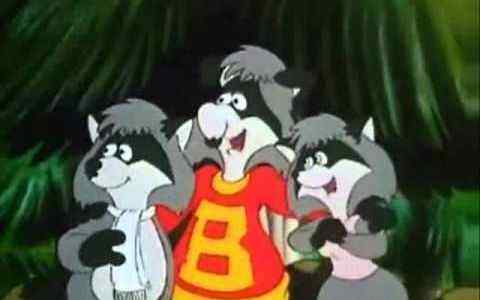
Starting as a Christmas special entitled, The Christmas Raccoons (1980), its popularity led to other specials, which eventually led to an animated series that lasted for five seasons. Most animated shows would be fortunate to last till their third season before getting canceled. The Raccoons often consisted with messages of friendship, teamwork, and environmentalism through likeable characters such as protagonist Bert Raccoon and antagonist/anti-hero Cyril Sneer. Canadian programming often ensured to have positive imagery within their programming and The Raccoons helped to portray that, along with the incredible catchy ending song “Run With Us” by Lisa Lougheed that made an impact in not only Canada but in other countries as well. While the cartoon is often recognized for being significant towards Canadian programming, The Raccoons also dealt with tough competition in Canada, as the show was set with two other American programs in the same block on CBC, The Wonderful World of Disney (1954-Present) and Fraggle Rock (1983-1987). Giving the assumption for those who aren’t knowledgeable of the medium, to automatically assume the program was made by Americans. Similar to the matter of how often people would assume all animated films, even Warner Bros. or DreamWorks, to be made by Disney just because the studio is famous for its animation. This problem would continue to happen into the 1990s with the introduction of Computer Animation in media.
Introduction to CGI
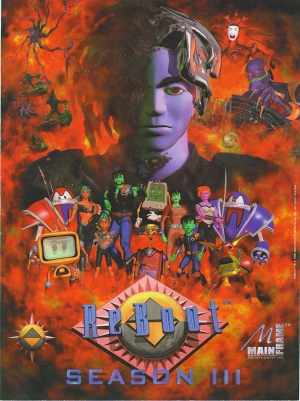
With the impending introduction of 3D animation, the 1990’s were considered the Stone Age for the technology as its usage was slowly growing over time, often in action films. When it came to television, it was used mostly for the show’s introduction to be eye-catching for the audience. And in one year before the first CGI film in cinematic history Toy Story (1995) was released, Canada was the first to make television history with Mainframe Entertainment’s groundbreaking CGI series, ReBoot (1994-2001). Airing on YTV in Canada and ABC in America, the popularity of the series skyrocketed. Paving the way for other 3D animated shows to be produced within and outside of Canada. However, in a similar way like The Raccoons, most people would once again often associate ReBoot as an American show than Canadian for two reasons.
Unlike The Raccoons, ReBoot shows no connection to its country of origin in its presentation as the entire premise takes place in the fictional world of Mainframe that resides inside a computer. Like the quick assumption mentioned earlier, because the program ran on ABC for the first two seasons, audiences assumed that the show was made in the United States. Unintentionally taking the creative recognition away from the Canadian animators. As a result, by the time ReBoot became recognized as a Canadian program, many more CGI shows was produced in America that would be popular as ReBoot finished its official run, making its recognition far too late. During the dawn of the new millennium, the competition became fierce when the booming popularity of Japanese anime invaded Canadian and American networks, taking audience viewership away at an alarming rate. Around this time, this was the period when Canadian animation started to become recognizable through online communities, although divisive through the constant usage of Flash animation.
Flash Animation
Flash animation is made through the usage of the Adobe Flash program, starting out as a method to make cartoons on the internet, eventually began to be used as a cost-effective method to produce cartoons in the digital era. Considering that Canadian animation doesn’t have a strong budget like its competitors from America and Japan, this was the answer for many Canadian networks to produce their cartoons faster. The overall quality of the program can differ based on the effort put into the show with its writing, directing, and animation style. Some programs such as Jacob Two-Two (2003-2006) contribute to the Canadian identity and was popular with its easy-going and likeable presentation. While others such as the George of the Jungle remake (2007-2008) are despised for its cheap presentation and obnoxious tone, unintentionally giving the impression to many online communities that animated shows from Canada are cheap and shallow. That accusation was resulted from the one show that has lasted for years and is considered one of the most hated of today’s cartoons, Johnny Test (2005-Present).
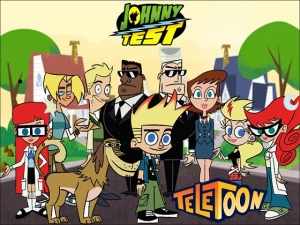
Johnny Test is often considered the definitive example of everything wrong with flash cartoons. Consisting of unlikable one-dimensional characters, a cheap premise that is a rip off Dexter’s Laboratory (1996-2003), rehashing plots of episodes from its own show, and most obnoxious of all is its fast pace with characters yelling and having sound effects every time the characters move with no consistency or purpose. The irony of Johnny Test’s infamous legacy is that the show was actually American before becoming a Canadian program. The show was produced by Warner Bros. animation during its first two seasons but was then sold to Teletoon midway through production. The only thing that was changed for the show was its switch from traditional animation to flash, which left a sour taste in audiences’ mouths with all the changes made in tone that happened since then. Aside that, there have been many Canadian animated shows that improved its quality over time, but the damage caused by programs like Johnny Test was already done, making the task for positive recognition harder for Canadian animation in a modern perspective.
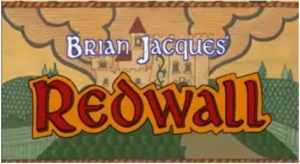
With all that is presented, while Canadian animated programs are having their cultural origin recognized more thanks to the Internet, however it is method of production compared to other shows makes it harder for them to earn respect from the modern audience. For many viewers, it is the writing and characters that can make a difference even if its animation is not that good. However, in a generation where the visual quality of the product seems to be the sole way to judge a show’s worth at first glance, Canadian animation may be trapped forever in an eternal struggle against America and Japan in the animation industry for recognition. One must ask if Canada’s animation budget was strong enough like its competitors, should the networks produce animated programs that can be similar to American and Japanese shows to easily support an audience? Or should Canadian networks allow their animators to produce unique Canadian animated programs without the desperation to appeal to the lowest common denominator like Johnny Test? In the end it can go either way depending on the networks believing what the audience wants. And until that time when all animation can be seen as equal to all audiences, there will be reminders to everyone that Canada is capable of producing iconic animated programming as significant as any other animated picture.
What do you think? Leave a comment.
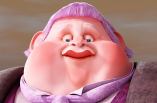

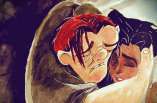







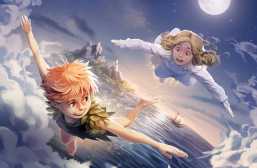
I find this article very insightful. I was aware of the presence of Canadian animation (or lack there of), but was delightedly surprised at the history and contribution it made to Canadian culture. I have to agree with the author, with countries such as the US and Japan producing a vast majority of the animation industry, Canadian animation could be forgotten and almost lost in that tide of influence.
http://variety.com/2014/film/festivals/canadian-animation-talent-guru-studios-1201299746/
In this Variety article, it explains that Hollywood is seeking Canadian animators now, which hints that they’re starting to recognize Canadian television series. This is because Canada has the benefit of tax credits, which makes it more advantageous to hire Canadians than Americans.
Maybe the future of Canadian animation isn’t as bleak as we thought!
I remember seeing The Devil and Daniel Mouse as a kid. I don’t think I’ve watched it since the 70’s.
Great childhood cartoon listed here.
Nelvana Studios had so much potential but poor marketing for Rock & Rule might have done them in. Better than Disney Studios and definitely a distinctive style very different from the Japanese.
Some of these animations brings back memories of when I was little! I haven’t seen them in ages!
I am 25, and live very near Canada. I remember watching The Raccoons via a Canadian station probably twelve or thirteen years ago. I loved it. It was right up there with Ducktales, Gargoyles, Aladdin, Dinosaurs, Gummi Bears and Ren and Stimpy (when Ren and Stimpy first aired, I was too young to understand most of the adult humor it had, so my father and I both enjoyed the series, but for different reasons).
Jacob Two-Two is a great show for kids,
Recently I rediscovered ReBoot while I cleaned my house. It had been my favourite television program when I was younger, and I was eager to watch the tape full of recorded episodes that I had just found.
They’re going to create 26 new episodes for Reboot! They haven’t released the date yet though.
That’s a great retrospective on Canadian animation history.
The Raccoons was the first TV series produced entirely with in Canada and it’s one of my favorite tv series.
All Canadians should be proud of their animation scene!
I have not seen The Devil and Daniel Mouse animated film since the 70s, (I’m 50 yrs old now). Believe it or not, I’ve always remembered the “Moral” to the story, “A song from the Heart beats the devil every time.”
Saw this in kindergarten over thirty-five years ago.
I saw this originally in ’82 and was impressed as to how adult and sophisticated it was. It still doesn’t disappoint!
Great work…although a little unfair because this is pure nostalgia!! Nice to see the promotion of Canadian programming.
Yeah I know what you mean, as there are several newer shows made in Canada that I do enjoy like Total Drama. The problem was that I wasn’t sure to include them or not because of the dividing point I brought up, especially in today’s generation. For one half that can enjoy a show, there is the other that hates it, so I wanted to try to make it as neutral as possible, with the downside admittedly that most examples are nostalgic. But those were based at the time before we had online communities to help make us aware about what is responsible for a show. Does that make sense?
Makes perfect sense. There is nothing wrong tapping into nostalgia. There are plenty of great writers, statesmen, and thinkers that hearkened back to “the good old days” to make a point relevant to their contemporary audience. I think you have done just that, made a point about now by using past examples. I think you did a fine job.
I’ve been an avid ReBoot fan since it first aired on ABC in 1994. I’d have to say that one of my most cherished childhood memories is watching ReBoot on Saturday mornings.
There were a lot of fantastic cartoons, but Raccoons was the coolest one (though ‘Muppet Babies’ is way up there too).
Trailer park boys, Mr. Dressup, Hockey night in Canada and The Red green show. but i like to think of the raccoons as near the top!
Great choices don’t get me wrong, but I am focusing more on animation lol.
Great article! You managed to cover many important perspectives on why Canadian cartoons fail to succeed. The quality of animation and character development are definitely important for the success in not only cartoons, but also in Canadian TV shows and films, such as those broadcasted on Global. Recently, there has been an increased fan-base in Canadian TV shows, such as Rookie Blue. Overall, with better animation and new storylines, Canadian cartoons can experience in increase in viewership, both locally and globally.
REboot was one of my all-time childhood favourites and it still is today.
These were true classics, unlike most of today’s cartoons.
Nice research. Got me thinking that I’d love to read an article or two on the history and life the The National Film Board of Canada – https://www.nfb.ca/channels/Animation/
Some ground-breaking animation techniques were born within those office walls along with unforgettable classics such as – The Cat Came Back – Neighbours – Log Driver’s Waltz… There was also an animation short I recall about a lady in her apartment who would take a bath when the man who lived below invited his friends over to play classical music. She would put her toy titanic in the tub and would close her eyes while listening to beautiful music eminating from below…
Thanks for the memories!
My dad and my uncle were quite fascinated by ReBoot and loved it as much as I did.
Beautiful timeless animations.
This was a good look at the history of animation in Canada. I grew up entwined with anime but being Canadian there’s definitely a sense of pride in knowing we can produce great work too. Jacob Two-Two was my personal favourite of the Flash era, the art style preserved a certain grit where a lot of other shows look very flat. Here’s hoping we can produce more great animation in the years to come.
Also thanks for the heads up, I had no idea Redwall or Inspector Gadget were Canadian productions too.
I remember watching most of these shows as a child, especially Jacob Two Two and unfortunately Johnny Test ( I had questionable taste as a child. ) I also enjoyed The Raccoons later in the rerun days. I love reading about the history of Canadian animation. The one thing I didn’t know was that Inspector Gadget was Canadian, you learn something new everyday.
Really interesting article! Canadian animation is definitely not very well known internationally and it is good to have people like you to enlighten us.
It’s amazing that despite being innovators in the field, Canadian animation studios continue to be cast to the shadows, having to produce stuff like…*shudder*…Johnny Test. Great insight!
Animation and storytelling in general in Canada tend to focus on Canadian identity and asserting itself as properly Canadian. While there may a few failures in Canadian animation, Canada does have a reputation for good animators. Several animators have gone on to work for Disney and have been nominated for Academy Awards and the Golden Globes–How to Train Your Dragon and Big Hero 6 for instance. There may not be a strong presence as the American animators, but there are some good shows from Canada.
Really? You’re going to call Johnny Test a Dexter-knockoff? Are you mental?
The raccoons reboot coming in 2021 when raccoons fly